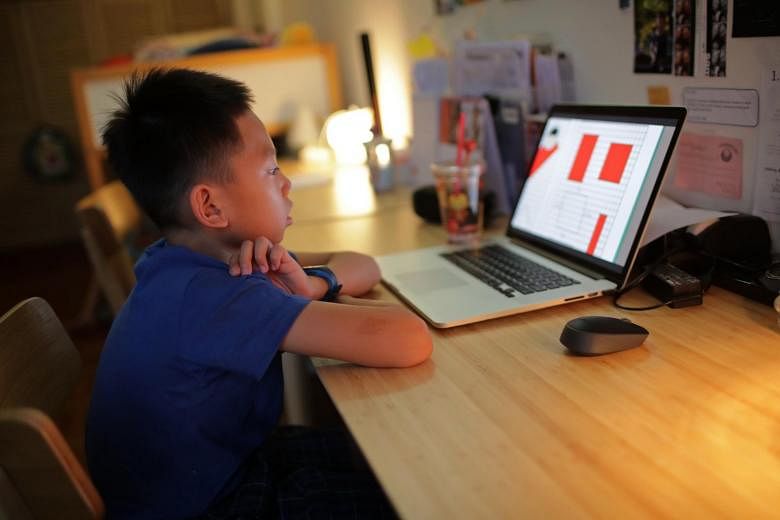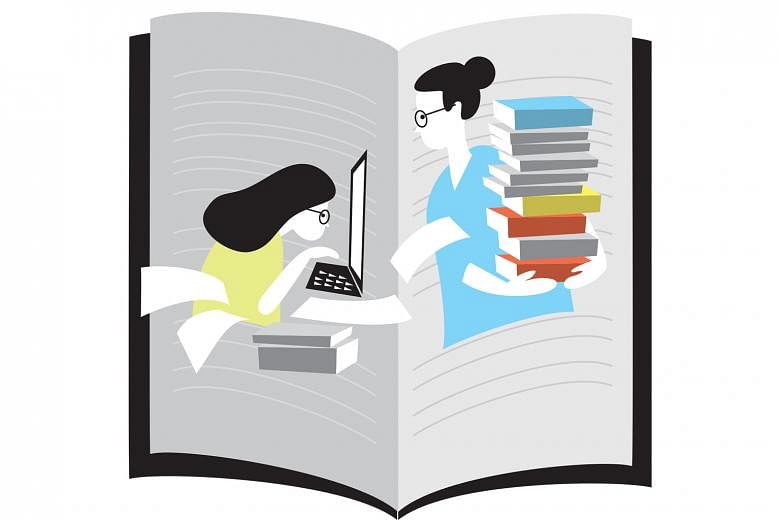Web-based instant communication tools such as WhatsApp, Skype and FaceTime have helped to build a more interconnected world, removing the barriers of distance.
Yet, during this coronavirus pandemic with its requirements for greater physical social distancing, the same high-tech tools can barely simulate the psychology of in-person learning, or the productivity of face-to-face interactions.
Barely one week after all enrichment centres and sporting facilities shut, my 10-year-old daughter lamented: "I miss my friends."
It has been more than two weeks since my daughter's English enrichment class moved online, and her nine-hour weekly gymnastics training halted.
Having worked from home for nearly two months now, I too am missing the lunches and coffee sessions with colleagues and business contacts.
The isolation walls closed in further last Tuesday, when Singapore entered what would be a month-long circuit breaker period, along with the roll-out of more stringent measures to halt the virus' spread in the community.
New rules on safe distancing forbid nearly all private gatherings of people who do not live in the same household. My family marked Good Friday by tuning in to a pre-recorded church service on YouTube; it was nowhere near ideal but we had to make do.
Non-essential businesses have also shut. Food outlets remain open but only for takeaways and deliveries. There will be no indulging in the national pastime - shopping and eating out - or hanging out in malls to escape the sweltering April heat.
But not being able to hang out and eat out is only a minor inconvenience next to the disruption brought about by school closures, also one of the latest measures.
Last Wednesday, mainstream schools shifted to home-based learning (HBL), with parents shouldering most of the schooling requirements.
My daughter, an extrovert, didn't take well to social isolation and begged to have virtual recess with her friends. As much as I would like to arrange for one, I had no time.
Also, my ordeal had just begun.
With HBL, I have become education coordinator, tech helpdesk and private tutor - on top of chasing regular work deadlines that involve dialling into conference calls and looking through hundreds of e-mails a day, among other things.
Before, my work productivity dipped only in the afternoon when my daughter returned home from school. With HBL, however, my entire work day is in disarray.
Last week, I could hardly send out an e-mail or finish a phone conversation without being interrupted with questions such as: "What's the password to Student Learning Space?", "I can't type my answer", "How do you find the area of the triangle?" or "How do you make water droplets appear faster on a cold surface?"
I also lost count of the number of times I shouted "Hurry up", "Don't waste time" and "Enough of screen time".
Despite the inconvenience, everyone in my household is keenly aware of the need for the partial lockdown; and we wear our masks religiously when we step out of the house to shop for daily essentials.
I'm counting down to the last day of HBL, on May 4, when the stay-home circuit breaker period is scheduled to end. But I do not wish for any premature lifting of social restrictions, which could lead to a fatal resurgence of infection cases and start the social distancing cycle all over again. I only wish that schools are better prepared next time, say, by developing a curriculum that is interactive and better suited for delivery online.
As paper-based worksheets still form the bulk of my daughter's school work, which is perfectly fine with me, I wish we don't have to submit the written tasks until school reopens.
Right now, I have to scan and upload completed worksheets on a shared storage drive, monitor the shared drive religiously for marked assignments, and go through the corrections with my daughter.
This is not ideal. Thus, I'm keeping her completed worksheets until next month. As much as I resent creating a backlog, I'm mindful of the need for her teacher to explain in person or over the phone why ice melts faster with salt or why A earns $20 more than B.
Some teachers had arranged for Zoom conference sessions, but the tool can no longer be used, after a lewd incident involving a hijacked video stream.
Even if the teachers have found the right online tools, in-person teaching still cannot be replaced because of screen time restrictions, which will limit the amount of daily online lessons.
The World Health Organisation and American Academy of Paediatrics have recommended that children aged 13 and below should be exposed to screens for only a maximum of two hours a day.
There are still more than three weeks to go before May 4. For now, I will just focus on the positives: At least my daughter and I do not need to wake up at 6am to catch the school bus, and we will have ample family time together within the protective walls of home.



